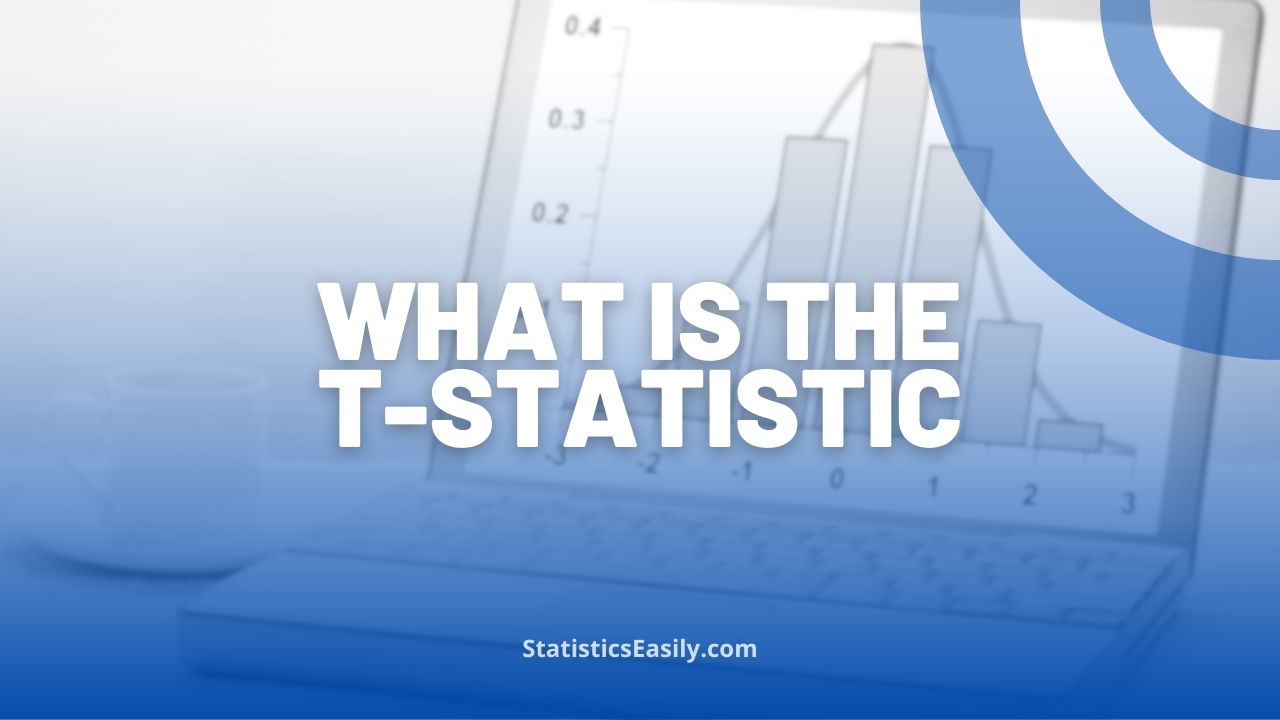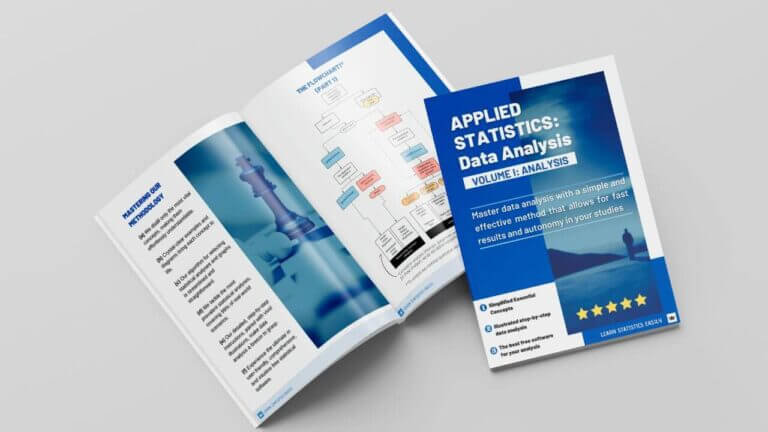What is the T-Statistic? Mastering the Basics
You will understand “what is t statistic” principles and learn how to apply them for practical data analysis and insights.
Highlights
- t-statistic is essential in inferential statistics, allowing for hypothesis testing and evidence-based decision-making.
- Degrees of freedom are critical in t-statistic, affecting the t-distribution and test outcomes.
- t-statistic, p-value, and confidence intervals are interconnected, providing insight into statistical significance.
- t-statistic has real-world applications in education, healthcare, marketing, human resources, and finance.
- Common misconceptions and mistakes in t-statistic usage include ignoring assumptions, misapplying tests, and misinterpreting p-values.
Introduction
Understanding fundamental statistical concepts like the t-statistic is essential for data analysis success.
The t-statistic, a measure derived from the t-distribution, plays a vital role in hypothesis testing and is used explicitly in t-tests.
By mastering the basics of inferential statistics, you’ll be better equipped to utilize t-statistic and t-tests in data analysis and research projects, ultimately making more informed and data-driven decisions.
t-statistic and t-test
The t-statistic, also known as the t-value or Student’s t, is a measure derived from the t-distribution. It determines the statistical significance of the difference between two population means.
A t-test is a statistical hypothesis analysis that uses the t-statistic to compare the means of two groups. It helps determine if the observed differences between the groups are significant or merely due to chance.
Types of t-tests
One-sample t-test
The one-sample t-test compares a single sample mean to a known population mean. This test is often employed when researchers are interested in assessing whether the sample mean significantly differs from a hypothesized value. The t statistic calculated in this case compares the sample mean to the population mean, taking the sample size and standard deviation into account.
Independent samples t-test
The independent samples t-test, or the two-sample t-test, is utilized when comparing the means of two independent samples. This test aims to determine if there is a significant difference between the population means from which the two samples were drawn. The t statistic, in this case, is computed based on the difference between the sample means, their variances, and sample sizes.
Paired samples t-test
The paired samples t-test, or dependent samples t-test, is used when comparing the means of two related samples. This test is often employed when observations are paired, such as before-and-after measurements or matched subjects in experimental designs. The t statistic for this test is calculated by considering the differences between paired observations and their mean and standard deviation.
Assumptions
Independence of Observations
The observations in the samples must be independent of each other. This means that the occurrence of one observation should not affect the probability of another observation occurring. For the independent samples t-test, the samples should be randomly drawn and unrelated. For paired samples t-test, the pairs of observations should be independent of other pairs.
Normality
The data should be approximately normally distributed, particularly for small sample sizes. This assumption means that the sampling distribution of the means follows a normal or near-normal distribution. While t-tests are considered robust to moderate deviations from normality, severe violations can impact the accuracy of the test results.
Homogeneity of Variances
For the independent samples t-test, the variances of the two populations being compared should be equal or at least approximately equal. This assumption is known as the homogeneity of variances. If the assumption is violated, alternative tests such as Welch’s t-test can be used, which does not require equal variances.
Interval or Ratio Scale Data
T-tests are designed for continuous data that can be measured on a ratio scale or interval. These data types have equal intervals between values and a meaningful zero point.
Ensuring these assumptions are met allows you to apply t-tests and the t-statistic in your research and data analysis, leading to valid and reliable conclusions.
💪 Become a Data Analysis Pro in No Time
Discover the Game-Changing Techniques Inside Our Ultimate Guide!
Degrees of Freedom
Degrees of freedom is a fundamental statistical concept that plays a vital role in the t-statistic calculation and the critical values in t-tests determination.
Degrees of freedom is the number of values in a statistical analysis that can change freely without breaking any rules or constraints.
In the context of t-tests and t-statistic, degrees of freedom help to define the shape of the t-distribution, which is used to calculate p-values and make inferences about the population parameters.
The degrees of freedom for different t-tests are calculated as follows:
One-sample t-test
For a one-sample t-test, the degrees of freedom are determined by subtracting one from the sample size (n). In mathematical terms, df = n – 1.
Independent samples t-test
In the case of an independent samples t-test, the degrees of freedom are calculated based on the sample sizes of both samples (n1 and n2). The formula is df = n1 + n2 – 2.
Paired samples t-test
For a paired samples t-test, the degrees of freedom are determined by subtracting one from the number of pairs (n). In this case, df = n – 1.
t-statistic, p-value, and Confidence Intervals
These 3 components work in tandem to help researchers and data analysts evaluate the significance of their findings and draw reliable conclusions from their data.
t-statistic
As discussed earlier, the t statistic is derived from the t-distribution. It is used to assess the differences between sample means in t-tests. Finally, it serves as the foundation for calculating p-values and determining the significance of the results.
p-value
The p-value is a probability. It measures the evidence against the null hypothesis. In the context of t-tests, the p-value is the probability of observing a t-statistic as extreme or more extreme than the one calculated, assuming the null hypothesis is true. For example, a small p-value (typically less than 0.05) indicates strong evidence against the H0 (null hypothesis), suggesting that the observed differences are statistically significant.
Confidence intervals
Confidence intervals will provide a range of values within which the actual population parameter will likely fall, with a specified confidence level (e.g., 95%). In t-tests, confidence intervals estimate the difference between population means, or the true population mean, depending on the test type. The confidence interval width depends on the t statistic, the sample size, and the variability of the data.
Their relationship can be summarized as follows:
- The t-statistic is the foundation for evaluating the significance of the observed differences between means.
- The p-value, derived from the t-statistic, helps assess the evidence against the null hypothesis and determine if the results are statistically significant.
- Confidence intervals, also based on the t-statistic, provide an estimated range for the true population parameter, considering the sample data and variability.
Steps and Examples
Hypothesis testing is vital to inferential statistics, allowing researchers to make data-driven decisions based on sample data.
Steps in hypothesis testing using t-statistic:
1. State the hypotheses: The null hypothesis asserts no significant difference between the population means or that the sample mean equals the hypothesized value. The alternative hypothesis contradicts the null hypothesis, suggesting a significant difference between the population means or that the sample mean does not equal the hypothesized value.
2. Choose the appropriate t-test: Based on your research design and data, select the proper t-test, such as a one-sample, independent samples, or paired samples t-test.
3. Verify the assumptions: Ensure that the assumptions of the chosen t-test are met, including the independence of observations, normality of the data, homogeneity of variances (for independent samples t-test), and interval or ratio scale data.
4. Calculate the t-statistic: Using the sample data, calculate the t-statistic according to the chosen t-test formula.
5. Determine the degrees of freedom (df): Calculate the degrees of freedom for the t-test based on the sample size(s).
6. Calculate the p-value: Using the t-statistic and degrees of freedom, find the p-value from the t-distribution.
7. Compare the p-value to the significance level (α): Determine whether the p-value is smaller than the predetermined significance level (commonly 0.05). If the p-value is smaller, reject the null hypothesis (H0); otherwise, fail to reject the null hypothesis.
Example: Suppose you want to determine if a new teaching method improves students’ test scores.
You collect a sample of 25 students who underwent the new teaching method and compare their mean test scores to the known population mean of 80.
You choose a one-sample t-test for this scenario.
1. H0: μ = 80; H1: μ ≠ 80
2. One-sample t-test selected
3. Assumptions are verified
4. The t-statistic is calculated to be 2.5
5. Degrees of freedom: df = 25 – 1 = 24
6. The p-value, based on the t-statistic and df, is found to be 0.019
7. Since the p-value (0.019) is smaller than α (0.05), we reject the null hypothesis.
Conclusion: Significant evidence suggests that the new teaching method improves students’ test scores.
t-tests vs. z-test
This comparison will highlight the strengths and limitations of t-tests and help you choose the most appropriate statistical test for your research and data analysis.
t-tests vs. z-tests:
Both t-tests and z-tests are parametric tests used to compare means. However, there are some crucial differences between the two:
- Population Variance: t-tests are used when the population variance is unknown, whereas z-tests are appropriate when the population variance is known.
- Sample Size: t-tests are suitable for smaller sample sizes (typically less than 30), while z-tests are more appropriate for larger sample sizes.
- Distribution: t-tests use the t-distribution, which is more flexible with wider tails, whereas z-tests rely on the standard normal distribution.
- Degrees of Freedom: t-tests involve calculating degrees of freedom, which impacts the t-distribution shape. In contrast, z-tests do not require degrees of freedom.
Real-World Applications
Understanding “what is t statistic” and “what is t test statistic” is essential for grasping the theory behind inferential statistics and appreciating its practical applications in various fields and industries.
This section will explore real-world scenarios using the t statistic for data analysis and decision-making.
Education and Training
Educators and researchers can use t-tests to evaluate the effectiveness of different teaching methods, curricula, or training programs. By comparing the mean performance of students or trainees exposed to various interventions, they can determine which approach leads to the most significant improvement in learning outcomes.
Healthcare and Pharmaceutical Industry
T-tests play a vital role in clinical trials and medical research. They can be used to compare the mean effectiveness of two treatments or medications, evaluate the success of a new therapy or intervention, or assess differences in patient outcomes between different medical centers.
Marketing and Advertising
Businesses can use t-tests to analyze the performance of different marketing and advertising campaigns, measuring the impact on customer behavior, conversion rates, or sales. T-tests can help identify which strategy is more effective at driving customer engagement or generating revenue.
Human Resources
HR professionals can apply t-tests to compare employees’ average job satisfaction or performance in different departments, locations, or roles. This analysis can help identify areas of the organization that require additional support or resources, ensuring employees’ well-being and productivity.
Quality Control and Manufacturing
In manufacturing and quality control, t-tests can assess whether a product’s mean characteristics (e.g., dimensions, weight, strength) meet the desired specifications or differ significantly between production batches. This information can help identify and address issues in the manufacturing process.
Finance and Economics:
T-tests are commonly employed in finance and economics to compare the mean returns of different investment strategies or portfolios, assess the performance of stocks or bonds, or analyze the effects of policy changes on economic indicators.
Common Misconceptions and Mistakes
Assuming normality
One common mistake is assuming the data are normally distributed without checking this assumption. While the Central Limit Theorem states that the sampling distribution of the sample mean approaches normality as sample size increases, it is still essential to verify normality, especially for small sample sizes.
Ignoring assumptions
Ignoring or not verifying the assumptions of the chosen t-test (independence of observations, normality, and homogeneity of variances for independent samples t-test) can lead to inaccurate results and erroneous conclusions.
Misapplying t-tests
Applying a t-test when another statistical test is more appropriate (e.g., using a t-test to compare more than two means instead of ANOVA) can lead to incorrect results. Therefore, choosing the correct test based on the research question and data is essential.
Confusing one-tailed and two-tailed tests
Confusing one-tailed and two-tailed tests can lead to incorrect conclusions. A one-tailed test should be used when the research question specifies the direction of the effect. At the same time, a two-tailed test is appropriate when the research question does not specify a direction. For example, using a one-tailed test when a two-tailed test is needed increases the risk of a Type I error. Using a two-tailed test when a one-tailed test is needed reduces statistical power.
Incorrect interpretation of p-values
Misinterpreting p-values is another common mistake. A low p-value does not necessarily imply a large effect size or practical significance, and a high p-value does not always mean no effect or association. Therefore, p-values should be considered alongside other factors, such as effect size, sample size, and the study context.
Multiple comparisons problem
When making multiple comparisons using t-tests, the risk of making a Type I error (false positive) increases. A correction method, such as the Bonferroni correction, should be applied to control the family-wise error rate.
Conclusion
T-tests and t-statistics are crucial in evidence-based decision-making, versatility across fields, and establishing causal relationships.
They adhere to a rigorous methodology, ensuring valid and trustworthy conclusions.
Mastering t-tests and t-statistics is essential for accurate data analysis and effective communication, ultimately contributing to a greater understanding of the world.
Discover FREE samples from our newly released digital book and unleash your true potential.
Dive deep into advanced data analysis techniques, master the art of determining optimal sample sizes, and learn to communicate results effectively, clearly, and concisely.
Click the link to uncover a wealth of knowledge: Applied Statistics: Data Analysis.










